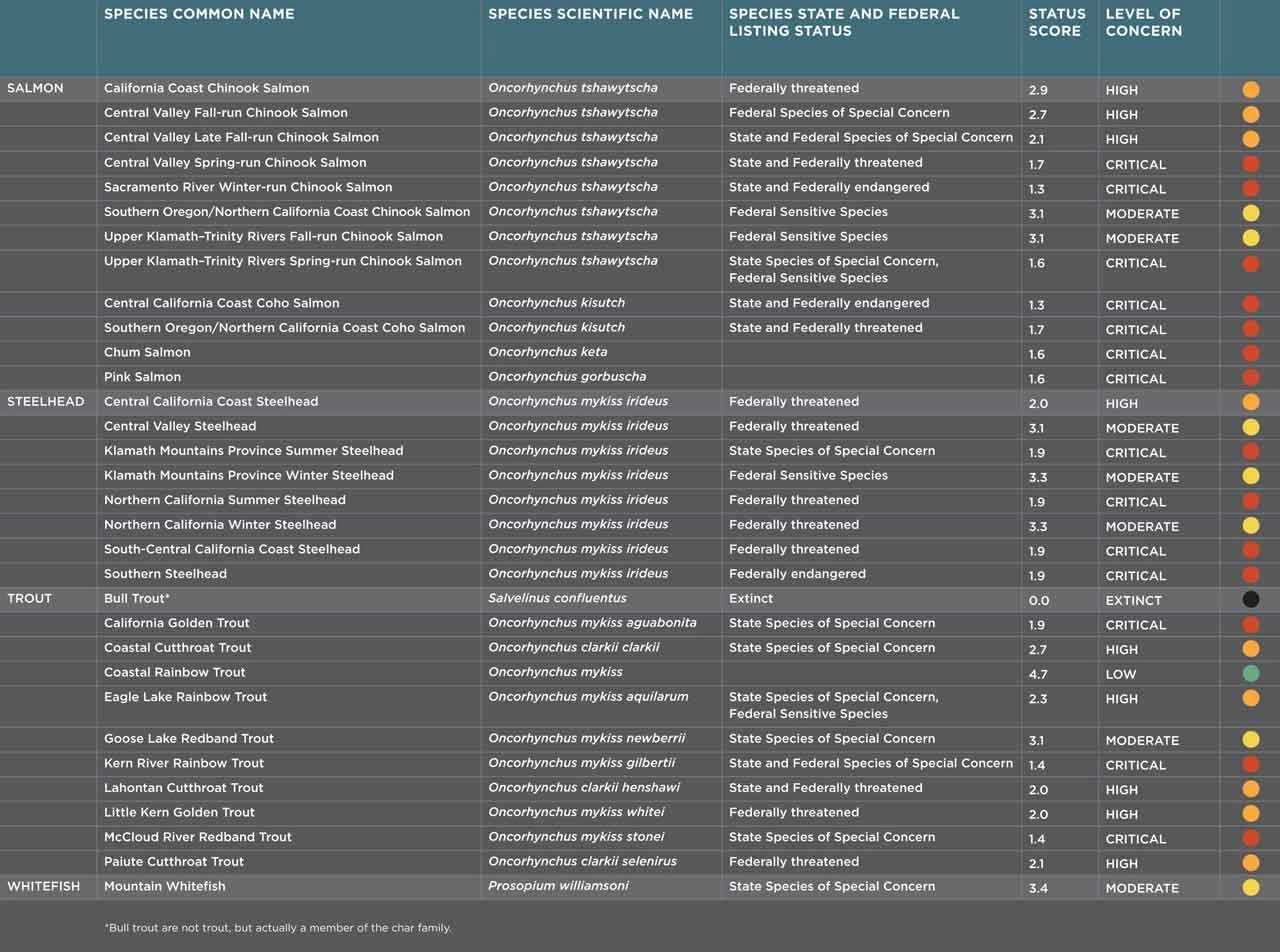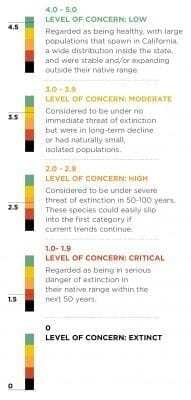A RETURN TO RESILIENCE
Saving California's native fish from extinction
The science behind this report has made it clear: we risk losing our native salmon, steelhead, and trout if we don't act now.
The loss of these iconic fish would be tragic. Native to California and uniquely adapted to our diverse landscape, they are more than just resident fish. By flourishing they signify that California's legacy of cold, clean water has been preserved, an asset as vital to our state as epic coast lines, magnificent Sierra Nevada mountains, towering redwoods and beautiful deserts.
Resilient fish populations indicate healthy waters, important for drinking water, agriculture, commerce, and the health of people and the environments in which we live. Declining fish populations indicate degraded waters, which threaten the health and economic well-being of all Californians.
Improving salmonid status throughout California requires:
- Protecting and restoring the places that matter most and
- Promoting strategies that will increase salmonid diversity and resiliency.
We call our plan a “Return to Resilience” because the salmonids, their managers, and those who care about ensuring their survival must be resilient in response to change wrought by the ever-increasing human demands on the planet.
With your support, we can take action to ensure California has thriving populations of wild salmon, steelhead and trout. The steps to get us there are outlined below.

Photo: Mike Hupp
The good news is that 31 of our 32 salmonids still persist. We have an opportunity to reverse this trajectory toward extinction, but the findings of this report underscore that we must act now. We must take bold, scientifically informed, and innovative actions to improve resilience of our native salmon, steelhead, and trout and the waters upon which we all depend.
Improving resilience requires an improvement in salmonid life history diversity. Salmonids have responded and adapted to environmental change for more than 50 million years due to variation in their life histories and behavior. Much of this variability is tied to differences in the timing of fresh water and ocean migrations. These timing differences contribute to life history diversity which, in turn, promotes species resilience to change.
Over the last century, life history and behavioral diversity has been greatly diminished due to changes in habitat, discontinuity between habitats, genetic homogenization, and interactions with non-native species. The relatively recent reduction in salmonid life history and behavioral diversity means that salmonids are less able to adapt to a rapidly changing California.
Access to diverse and productive habitats, and reductions in interactions between hatchery and wild salmonids, are fundamental to restoring salmonid resilience throughout California. Many of the historically productive and diverse habitats used by salmonids are either blocked behind dams and levees or are significantly altered and no longer function properly. Restoring such habitats and access to them is of paramount importance.



 Dams block access to historical spawning and rearing habitats. Downstream, dams alter the timing, frequency, duration, magnitude, and rate of change of flows decreasing habitat quality and survival.
Dams block access to historical spawning and rearing habitats. Downstream, dams alter the timing, frequency, duration, magnitude, and rate of change of flows decreasing habitat quality and survival.


 Human use of streams, lakes, and surrounding watersheds for recreation has greatly increased with population expansion. Boating, swimming, angling, off-road vehicles, ski resorts, golf courses and other activities or land uses can negatively impact salmonid populations and their habitats. The impacts are generally minor; however, concentration of multiple activities in one region or time of year may have cumulative impacts.
Human use of streams, lakes, and surrounding watersheds for recreation has greatly increased with population expansion. Boating, swimming, angling, off-road vehicles, ski resorts, golf courses and other activities or land uses can negatively impact salmonid populations and their habitats. The impacts are generally minor; however, concentration of multiple activities in one region or time of year may have cumulative impacts.













